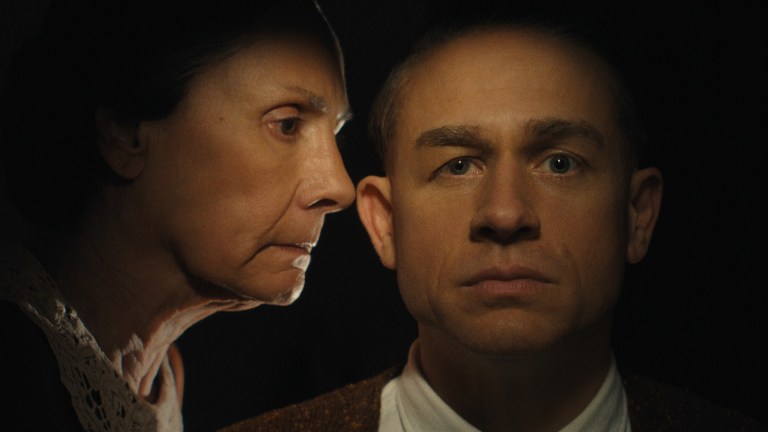Monster: The Ed Gein Story Ends by Reminding Us of a Much Better Show
You wanted Mindhunter season 3? Best we can do is a baffling Monster: The Story of Ed Gein.

This article contains spoilers for Monster: The Ed Gein Story.
Ryan Murphy and co.’s latest Monster has finally dropped on Netflix, and post-release, there’s been a bit of a commotion. Some of that commotion is expected: blurring the lines between fact and fiction is not uncommon in dramatic retellings of true crimes, and The Ed Gein Story has been dinged for this more than the previous series entries, but for anyone who didn’t switch off after an episode or two and made it all the way through to Gein’s series finale, there was a rather more unexpected surprise in store.
Previously, The Ed Gein Story had meandered through most of its eight episodes, hopping back and forth between telling (some of) the notorious serial killer’s real story and exploring some of the stories that were said to not only inspire him, but that he himself inspired. As such, the show lurched from Gein (Charlie Hunnam) to Nazi Germany to Alfred Hitchcock (Tom Hollander) making Psycho, back to Gein, then forward to show us Texas Chainsaw Massacre director Tobe Hooper as a young lad first hearing about Gein’s crimes. It even recreated at least one memorable scene from The Silence of the Lambs. By the time Gein was locked up in a hospital and diagnosed as schizophrenic, it was rather unclear how the show was going to fill its final hour until some familiar-looking characters entered the game.
Suddenly, Mindhunter’s FBI trio, Holden Ford, Bill Tench, and Wendy Carr, rolled up to interview Gein and some other prominent serial killers, a surprise addition that left fans who had been crying out for years for another season of that magnificent David Fincher series a little confused. These people sure did look like Holden, Bill, and Wendy but they weren’t played by Jonathan Groff, Holt McCallany and Anna Torv. Instead, actors Sean Carrigan, Caleb Ruminer, and Megan Ketch mimicked their appearances in Mindhunter, interviewing subjects and helping to facilitate Monster’s final word on all the other monsters Gein apparently inspired.
The effect of adding Mindhunter’s characters to Gein is a weird one, despite them having real-life counterparts, and is best described as “we have Mindhunter at home”. At best, it reminds us of a much better show, and at worst, it reminds us that Netflix never delivered a third season of it, preferring to spend its money elsewhere.
“We wanted to underline the last thing tonally that through Silence of the Lambs, he really influenced Mindhunter as well,” Gein showrunner Ian Brennan told Tudum (via US) about the decision. “That would be a fun way to put a cap on it, to use this other filmic vocabulary and then talk about the ways that he was part of those early days of FBI profiling.”
Indeed, one person’s “fun” is another person’s “pain.”
Monster: The Ed Gein Story is currently hovering at around 33% for critics on Rotten Tomatoes and around 50% for audiences, but those kinds of reactions never stopped viewers vaulting the previous two Monster entries to the top of the Netflix charts. Gein will also likely claim the top spot, especially in a quiet week for new streaming releases.
